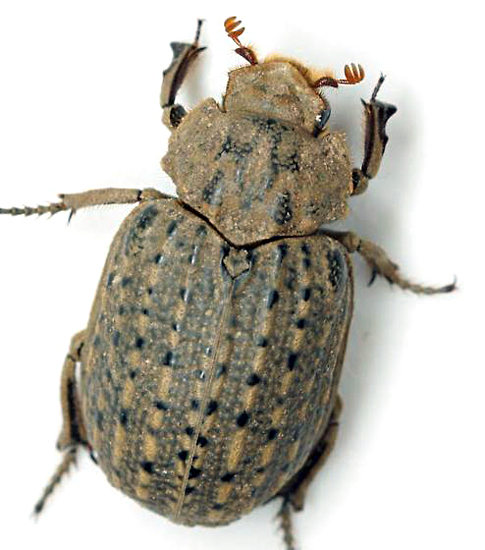A new Keratin Beetle species named ‘Omorgus Khandesh’ has been discovered in the Khandesh region of Maharashtra. With the addition of this new species, now there are a total of 14 extant species of this family in India.
Keratin Beetle
Omorgus Khandesh, commonly known as the Keratin Beetle, is a species of beetle that belongs to the family Trogidae. This beetle is commonly found in the Indian subcontinent. It is known for its unique ability to digest keratin, a protein found in hair, feathers, and nails.
The Keratin Beetle is an important insect from an ecological perspective, as it plays a crucial role in the decomposition of animal carcasses. It feeds on the hair and feathers of dead animals, and thereby helps in breaking down the organic matter into simpler compounds that can be easily absorbed by the soil. The beetle is also known to feed on the eggs and larvae of other insects, making it a natural pest controller.
The Keratin Beetle has a dark brown or blackish-brown color, with a robust body that measures around 10-15 mm in length. It has a pair of antennae, which it uses to sense its surroundings and locate its prey. The beetle is usually found in dry, sandy areas, where it can easily burrow into the soil and lay its eggs.
One of the most interesting aspects of the Keratin Beetle is its digestive system, which is specially adapted to break down keratin. The beetle has a set of enzymes that can break down the tough protein molecules of keratin into smaller peptides and amino acids. These molecules are then absorbed by the gut and used for energy and growth.
The Keratin Beetle is a fascinating insect, and its unique ability to digest keratin has attracted the attention of researchers. Scientists are studying the enzymes and metabolic pathways of the beetle, in the hope of developing new technologies for the management of keratin-rich waste materials, such as feathers and hair.
Keratin Beetle can be helpful for forensic science in detecting the time of death of an animal or human. Blowflies are among the initial insects to appear during the decomposition of a body, while the ultimate stage is reached when keratin feeders arrive. This highlights the significant role of keratin feeders in forensic science.


